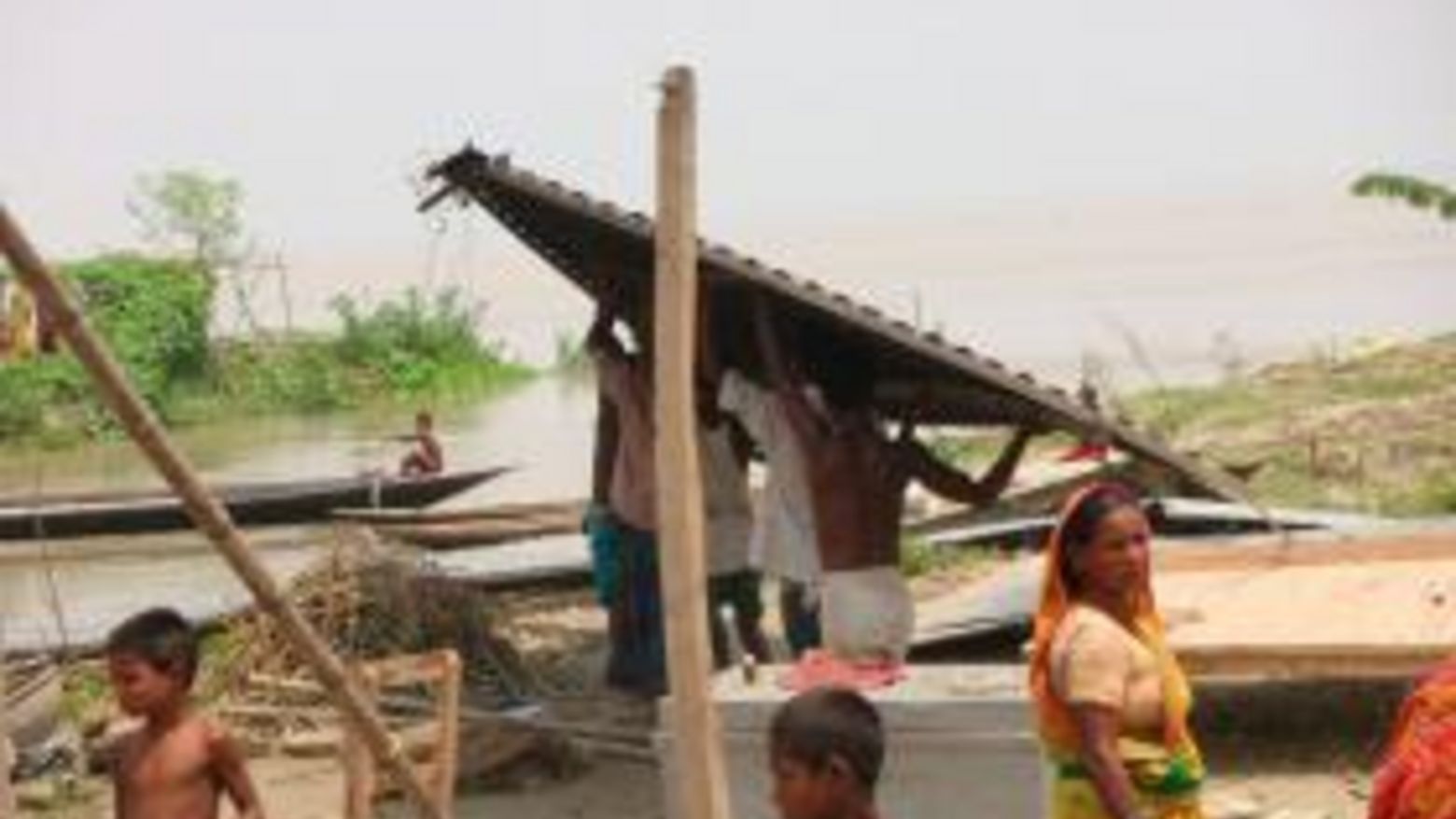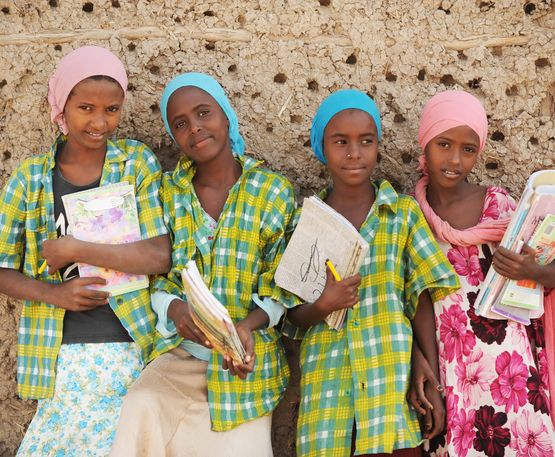It became obvious that the continued lack of mitigation ambition and inadequate resources to implement adaptation actions are causing increasingly suffering and significant loss and damages of assets and properties in the poor and vulnerable countries.
Many research reports (special report of the intergovernmental panel ‘Managing the Risks of Extreme Events and Disaster to Advance Climate Change Adaptation'; the Global Assessment Report on Disaster Risk Reduction and the Global Framework of Climate Services of the World Meteorological Organization) and practical evidences on the impacts of climate change throughout the world suggests that the Loss and Damage, associated with the adverse effects of climate change, can no longer be avoided through mitigation nor can be avoided through adaptation. Therefore, we should undertake multiple approaches to address those damages and losses, some which may have synergies with adaptation efforts, while others will require taking action through new arrangements and stand-alone approaches, which could be referred as ‘beyond adaptation’ measures.
Following a proposal put forward by the Alliance of Small Island States (AOSIS) in 2008 the issue of Loss and Damage was included on the agenda of UNFCCC negotiations. The COP 16 in Cancun, in its decision 1/CP16, decided to establish a Work Programme to address the issues related to Loss and Damage in developing countries in a more comprehensive and actionable manner and SBI is mandated to do so. Further on the issue, the draft decision -/CP.17, adopted by COP 17 and CMP 7, invites Parties, relevant intergovernmental organizations, regional centres and networks, the private sector, civil society and other relevant stakeholders to take into account the three thematic areas when undertaking activities aimed at assisting Parties in enhancing their understanding of, and expertise that will help to address, loss and damage. The thematic areas include:
Thematic area 1: Assessing the risk of loss and damage associated with the adverse effects of climate change and the current knowledge
Thematic area 2: A range of approaches to address loss and damage associated with the adverse effects of climate change, including impacts related to extreme weather events and slow onset events, taking into consideration experience at all levels
Thematic area 3: The role of the Convention in enhancing the implementation of approaches to address loss and damage associated with the adverse effects of climate change
Meantime four regional expert level workshops under the guidance of SBI, referred to in decision 7/CP 17, have been held to generate knowledge, opinion and views on the above thematic areas. These experts meetings have delivered progress in understanding the issues and challenges to be incorporated in developing Work Programme on loss and damage. Though loss and damage is relatively a new issue in UNFCCC negotiation process but it has progressed well so far, which raises expectation to achieve some tangible outcome in the COP 18. The expected deliverables of COP 18 on loss and damage are;
a) Finalization of ongoing work programme and comprehensive response to loss and damage.
b) Establish a mechanism under the COP to assess diverse risks (both rapid and slow-onset) and approaches for addressing loss and damage, including by rehabilitating and compensating the losses and damage.
c) Consider the concept of A Multi-Window Mechanism put forward by AOSIS to address Loss and Damage from Climate Change Impacts as a basis for future negotiation on the issues. This Multi-Window Mechanism consists of three inter-dependent components: a) Insurance, b) Rehabilitation/Compensatory payments, and c) Risk Management component. These three components play different and complementary roles and comprise necessary components of an integrated approach to risk reduction, risk transfer and risk management efforts.
d) Establishment of a second phase of loss and damage work programme at COP18 and elaborate function, institutional structure of international mechanism on loss and damage
Given the context and expectation on loss and damage negotiation the Subsidiary Body of Implementation (SBI) of the Convention proposed recommendations and draft decision for further discussion and negotiation by the country Parties. The text raised disappointment among many of the Parties and CSOs as the text ignored the critical issues should be considered to address loss and damage, but yet created scope of engagement of the Parties to deliver a best agreed outcome.
While it is important to undertake immediate measures on the three Thematic Areas to address loss damage, the negotiation at COP 18 is sidetracking towards merely on knowledge generation i.e. enhancing knowledge and understanding of comparative risk management approaches, strengthening dialogue, coordination, coherence and synergies among different stakeholders etc. and capacity building at the national and regional levels to collect and analyze relevant data for assessing the risk of loss and damage-all of these to be implemented through an invitation to the Parties and relevant institution outside of the Convention, as the US proposed. However, the key issues of addressing loss and damage like establishment of a compensatory mechanism in the context of the notion of ‘beyond adaptation ’and addressing the ‘residual losses’ caused by both sudden onset and slow onset events are complete missing points.
In the context of slow progress and detracted discussion on loss and damage negotiation it is really important to focus at least on three major issues;
First, understanding the risks that potentially will contribute to loss and damage: Climate change already has increased, and will intensify in future, risks mainly in two ways; firstly, global warming lead to change in precipitation and weather pattern leading agriculture and food security to enormous threat. And secondly, increased number of climate induced sudden onset disasters such as cyclones, floods, river bank erosion and increased tidal surge etc. and, slow onset disasters such as drought, salinity ingress, ocean acidification, increase of sea surface temperature etc. All of which will result both economic and non economic loss and damages in the form of destruction of infrastructure, habitat, loss of territories, crop production, natural resources and eco-system services, livelihoods, and eventually will lead to displacement and migration. Study (Shamsuddoha, Md, Khan, SM Munjurul Hannan, Hossain, Tanjir, and Raihan Sajid (2012). Displacement and migration from the climate hot-spots: Causes and Consequences, Center for Participatory Research and Development and ActionAid Bangladesh, Dhaka) suggests that climate change is causing increase in frequency and intensity of prevailing disaster events and triggering new form of disaster events. These events, both slow onset and sudden disasters, are not common everywhere, rather becoming unique and dominant for a particular region. Thus, the SBI takes the view that both extreme events and slow onsets will be considered as potential risks to loss and damage.
It is likely that the loss and damages resulted from slow onset events will be different from sudden onset ones while later will cause comparatively more indirect loss for a longer time period. It is more crucial to emphasize more on the slow onset event, while the current negotiation text gives little attention on this.
Second, Approaches to address loss and damage: The approaches to address loss and damage discussed so far could be framed under three broad categories; a) risk reduction by comprehensive disaster risk management and adaptation, b) risk transfer by introducing insurance mechanism and c) rehabilitation/compensatory mechanisms for unavoidable loss and damages. In line with the Second Thematic Area (i.e. to explore range of approaches to address loss and damage) the ongoing negotiation at COP 18 invites Parties to identify options and designing and implementing country-driven risk assessment strategies and approaches, including risk transfer and risk sharing mechanisms such as insurance, also invites implementing climate risk management approaches, while the approaches under third category (rehabilitation/compensatory) is grossly disregarded, especially by the developed country Parties .
Though there are wide ranges of approaches to reduce and address disaster risks but these are mostly sudden onset disasters centric, no approaches so far for addressing slow onset events like ocean acidification, salinity intrusion, loss of ecosystem services or loss of economic preferences etc. On the other hand insurance may not be helpful to transfer risks in many vulnerable countries; mere will create business opportunities for the insurance companies.
In fact approaches to address loss and damage would require an integrated approach of risk reduction, risk transfer, risk management and rehabilitation/ compensatory mechanisms to support unavoidable and un-insurable losses. Ignoring any category of the approaches may not be supportive to address loss and damage in a holistic manner.
Third, Establishment of an international mechanism under the convention: Currently there is no international stand-alone mechanism to address the issue in a holistic manner. G77 and China a decision under SBI ‘to establish an international mechanism to address adverse impacts of climate change, which complements existing arrangements for adaptation actions by developing country Parties, especially the least developed countries and small island developing States and other developing countries particularly vulnerable to the adverse effects of climate change.
In contrary, the US delegate wants to put all the loss and damage related issues under the Adaptation Committee and NAPs, while at certain point also agreed that ‘all the impacts of climate change could not be addressed only by adaptation and we have to send a strong signal to the global leaders to think beyond this’. US delegate also urged to make strong cases of ‘unavoidable’ and residual loss and damage of the impacts of climate change so that a stand-alone mechanism could be established.
This means that we really would require a different and stand-alone mechanism, which will be complementary to the national adaptation actions to that level to be compatible to reduce loss and damage by adaptation actions. But, still there are potential chances of loss and damage which could not be ‘avoided’ and, thus, we have to explore ‘adaptation plus’ mechanisms, institutions and opportunities to address unavoidable loss and damage.





